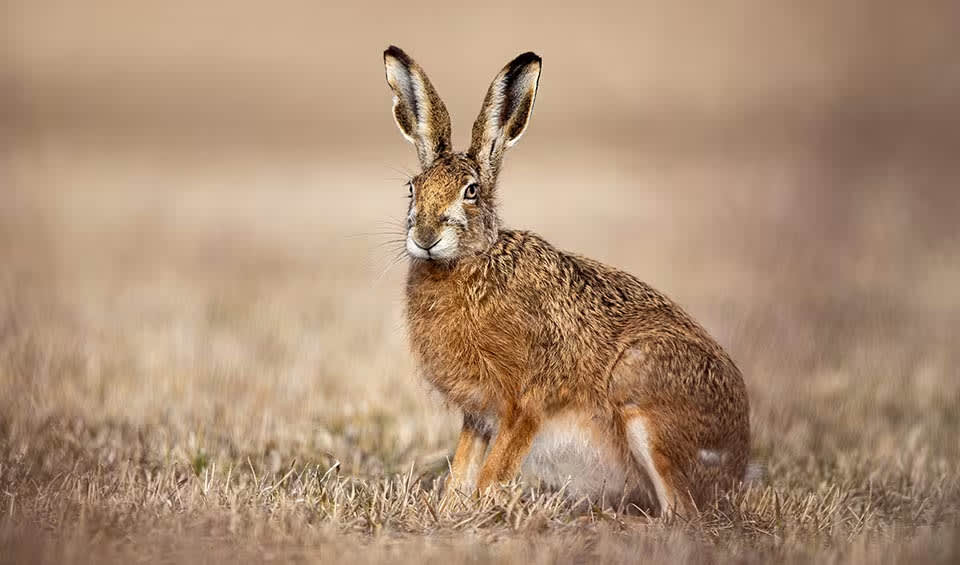This species has been introduced to other parts of the world, such as North America and Australia, often for sport hunting. The European hare is a vital part of the ecosystem, known for its unique behaviors and physical adaptations that enable it to thrive in a variety of environments, from farmlands to open fields.
European hares have long, powerful legs that allow them to reach speeds of up to 70 km/h (about 43 mph) when evading predators. This makes them one of the fastest terrestrial animals and a difficult target for predators such as foxes and large birds of prey. The European hare’s body is adapted for high-speed chases with a larger heart and nostrils compared to similar-sized animals, allowing for better oxygen intake during a sprint.
Another notable feature is the European hare’s long ears, which can be over 10 cm (4 in) in length. These are not just for hearing; they also help in thermoregulation, releasing heat to help cool the hare’s body during hot weather. The color of its fur is typically brownish with a greyish-white belly, providing camouflage in its natural habitat. During winter, their fur can become more greyish, blending into the frosted landscapes.
European hares are known for their solitary and nocturnal behavior, although they are sometimes active during the day. They do not dig burrows like rabbits but instead rest in a small depression in the ground called a “form,” which offers some protection from the elements and predators. European hares are also famous for their behavior during the breeding season, which includes a phenomenon known as “boxing.” This activity, where hares stand on their hind legs and “box” at each other, is usually between a female and a male, often as the female tests the male’s fitness as a mate or wards off unwelcome advances.
Distribution
 Albania
Albania Argentina
Argentina Australia
Australia Austria
Austria Barbados
Barbados Belarus
Belarus Belgium
Belgium Bolivia
Bolivia Bosnia And Herz.
Bosnia And Herz. Brazil
Brazil Bulgaria
Bulgaria Canada
Canada Chile
Chile Croatia
Croatia Czechia
Czechia Denmark
Denmark Estonia
Estonia Falkland Islands
Falkland Islands Finland
Finland France
France Germany
Germany Greece
Greece Grenada
Grenada Guadeloupe
Guadeloupe Hungary
Hungary Iran
Iran Iraq
Iraq Ireland
Ireland Israel
Israel Italy
Italy Kazakhstan
Kazakhstan Latvia
Latvia Liechtenstein
Liechtenstein Lithuania
Lithuania Luxembourg
Luxembourg Moldova
Moldova Montenegro
Montenegro Netherlands
Netherlands New Zealand
New Zealand North Macedonia
North Macedonia Paraguay
Paraguay Poland
Poland Romania
Romania Russia
Russia Réunion
Réunion Serbia
Serbia Slovakia
Slovakia Slovenia
Slovenia Spain
Spain Sweden
Sweden Switzerland
Switzerland Syria
Syria Turkey
Turkey Ukraine
Ukraine United Kingdom
United Kingdom United States
United States Uruguay
UruguayAnything we've missed?
Help us improve this page by suggesting edits. Glory never dies!
Suggest an editGet to know me
Terrestrial / Aquatic
Altricial / Precocial
Polygamous / Monogamous
Dimorphic (size) / Monomorphic
Active: Diurnal / Nocturnal
Social behavior: Solitary / Pack / Herd
Diet: Carnivore / Herbivore / Omnivore / Piscivorous / Insectivore
Migratory: Yes / No
Domesticated: Yes / No
Dangerous: Yes / No




